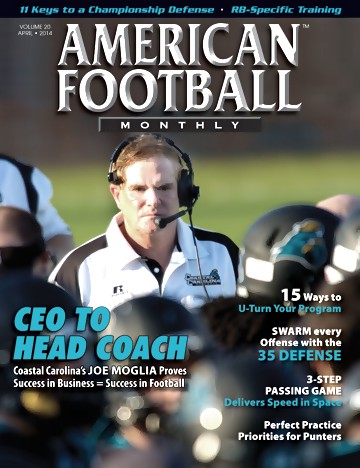AMERICAN FOOTBALL MONTHLY THE #1 RESOURCE FOR FOOTBALL COACHES
Article CategoriesAFM Magazine
|
Recognition and Competition: Motivating Players in the Off-Seasonby: Jason Winkle, Ph.D.Player and Team Development Specialist © More from this issue There is no magic formula for motivating players and yet it is considered a crucial part of any teamís success. Athletes are unique in their psychological needs for external motivation and even those needs change as each athlete matures. To complicate matters further, each year a teamís motivational needs change based on previous successes and a host of other variables. The following three successful coaches shared how they, through trial and error, found the sweet spot in motivating their athletes during the off-season. While the motivational techniques were unique to each coach, the similarities were striking. Individual recognition and use of competition were at the source of each coachís approach. ....The full article can only be seen by subscribers.Subscribe today!
|
|
|||||||
| HOME |
MAGAZINE |
SUBSCRIBE | ONLINE COLUMNISTS | COACHING VIDEOS |
Copyright 2025, AmericanFootballMonthly.com
All Rights Reserved





